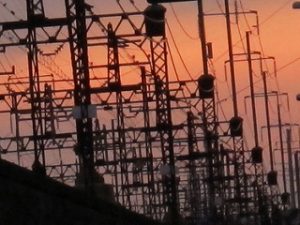Podcast: Play in new window | Download
Subscribe: Apple Podcasts | RSS
 Adam, Brian and Jeff discuss the electrical grid in this episode of The Engineering Commons.
Adam, Brian and Jeff discuss the electrical grid in this episode of The Engineering Commons.
- The difference engine, conceived of by J. H. Müller in 1786, and designed by Charles Babbage in the 1820s, is often considered the world’s first computer.
- Brian notes that electric furnaces are increasingly used in steel production.
- Adam and Brian discuss “knob and tube” wiring, an early standard for electrifying residential buildings.
- The first central power station in the United States was New York City’s Pearl Street Station, which began generating electricity in 1882.
- DC electrical systems continued to operate in New York City until 2007.
- Political and technological wrangling over whether the U.S. electrical system should use direct current (DC) or alternating current (AC) is known as the “War of the Currents.”
- Three-phase induction motors were introduced into the marketplace by General Electric in 1891.
- At one time, starting in the early 1900s, mercury-arc rectifiers were commonly used to convert high-voltage AC to DC. (YouTube)
- A polyphase arrangement is often used for electric power transmission.
- Once quite popular, synchronous electric clocks depend upon the AC power frequency to keep accurate time, requiring power utilities to maintain a precise average frequency.
- Electrical power grids have to respond to sudden changes in electrical demands, which may occur when large populations simultaneously take similar action due to the end of a sporting event or television show.
- A significant power outage, starting in Cleveland, Ohio, affected the Northeast United States in 2003.
- T. Boone Pickens has been promoting wind power in recent years.
Thanks to rik-shaw (blekky) for use of the photo titled “Bridgeport, CT Dec. 2012.” Opening music by John Trimble, and concluding theme by Paul Stevenson.